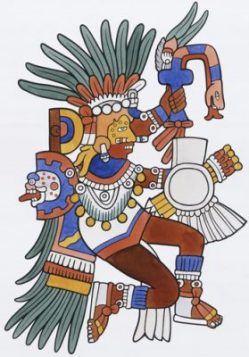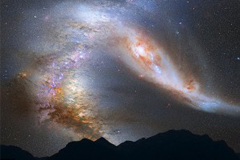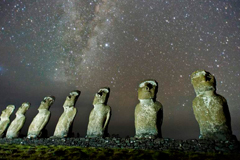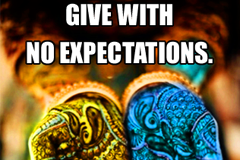From Poseidon’s mastery over the waters to the Dreamtime of the Australian Aboriginals, myths and legends are a hallmark of human culture. No matter where we were born, where we grew up and how our personal beliefs have ultimately evolved, we hold dear the myths that once shaped our world and create new ones to suit our modern existence.  Though the characters take on different costumes and the settings reflect new surrounds, every mythology is linked by a common set of themes. And by uncovering these patterns, we discover that our diverse lives and experiences don’t make us all that different after all.
Though the characters take on different costumes and the settings reflect new surrounds, every mythology is linked by a common set of themes. And by uncovering these patterns, we discover that our diverse lives and experiences don’t make us all that different after all.
At its heart, mythology is our way of connecting to one another and to a higher spiritual plane. We are less inclined nowadays to view the ancient myths as true accounts of creation and existence, but these stories persist as an undercurrent of continuity and meaning. These are the tales we tell each other to illuminate the world around us and identify our own part in a greater whole. Centuries ago, when our understanding was still primitive, we needed gods and monsters to explain how we came to be and why the world works as it does. We have long since evolved to answer many of these questions, but we will never grow out of our need for mythology. Without it, we lack the shared perspective that brings us together as a species.
Renowned psychotherapist Carl Jung was the first to notice the common themes that pervade the world’s mythologies. Observing his patients, he realized that the images welling through each patient’s psyche matched those that can be found in every mythology. As he explored this phenomenon, he became convinced that human beings share these themes in our collective unconscious, hidden at the depths of our minds. He noted that certain themes crop up in almost every mythology and labeled these the “archetypes,” universal images that may be expressed differently according to culture and experience, but always follow the same patterns. He described archetypal events such as birth, death and marriage and archetypal figures, such as tricksters, devils, heroes and mothers. He noticed that particular motifs appear in every mythology, including the apocalypse, the deluge and creation.
He became convinced that these archetypes are patterns that exist in the universe itself and are merely given voice and substance by human consciousness. He believed that archetypes transcend time and place. The collective unconscious, he explained, is the blueprint that exists in every person’s mind. It is from this blueprint that myths are born and grow – and the blueprint is what truly matters.
Mythologies tap into these archetypes to pull universal wisdom into tangible form. The myths of the past were born in a specific time and place; they reflect cultures and peoples who have changed considerably, but they never lose their relevance because the archetypes never change. We may no longer believe that Anubis awaits us at the gates of the underworld to weigh our hearts and judge our worth, but the myth still teaches the same timeless lessons. Through this myth and its counterparts, for example, we learn that living with an open, generous heart will see our efforts rewarded, while selfish and manipulative behavior will never be deemed acceptable.
James Hillman took this idea a little further, seeking to include a new aspect in the overall structure of psychology that had thus far been completely ignored: the soul. Calling this “the psyche,” he developed a school of Archetypal Psychology that focuses on this vital aspect of the human experience. To Hillman, dreams and myths were the very language of the soul. This went against traditional thinking, which had always aimed to define humanity in measurable, physical terms and had ignored the elements that were considered to be more abstract. He believed that our personal internal wisdom, found in our dreams and beliefs, is the key to our path and identity.
Myths give us a sense of shared perspective and values, connecting us through stories to our world and our community. They guide us to live in the best possible way, giving us role models and moral codes that can be used in any situation. They give meaning to our everyday activities as part of an overall grand scheme, reassuring us that the trials and struggles we face have meaning. And they explain those things that, even today, we cannot explain for ourselves, such as miracles and life after death.
Do we still create mythologies? Of course, though we may not immediately recognize them as such. We make celebrity figures into heroes, such as sports figures, scientists and movie stars. We work mythologies into every group, subculture and profession we enter, such as the “corporate culture” we experience at work, and into concepts such as technology or progress. We tell stories about modern people and situations that still feature the same archetypes as the ancient myths once included. Consider, for example, the tale of Steve Jobs, whose faith in his beliefs and refusal to give up in the face of adversity led to a change in how we think and a lasting international success. Consider science fiction as a genre, which has historically focused on warning us of the dangers ahead if we do not choose a careful path. The monsters in these tales may be maltreated robots and corporations taking over the world, but they are no different to the centaurs and devils of old.
Myths may change over time, but only to reflect our evolution as a species, while the archetypes within them remain constant. Without myths, life quickly becomes meaningless and without awe, as we begin to feel disconnected from our fellow human beings. Without mythologies and the archetypes within them, we can neither understand the world nor our own role within it. As Jung himself put it, “Not for a moment dare we succumb to the illusion that an archetype can be finally explained and disposed of. The most we can do is dream the myth onwards and give it a modern dress.”
About the Author:
Milan Ljubincic is an Adelaide psychologist and bestselling author of Island of Souls: Light within the Dark.
Image Credit: Tonatiuh (Aztec Sun God)






